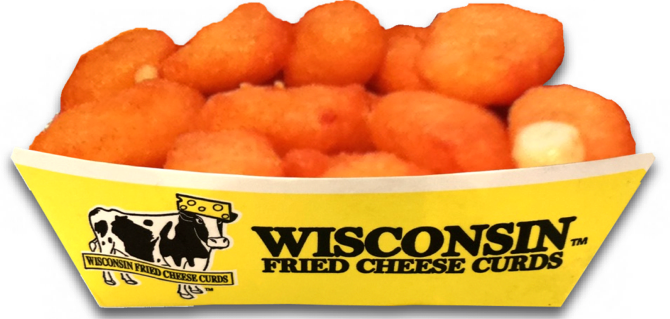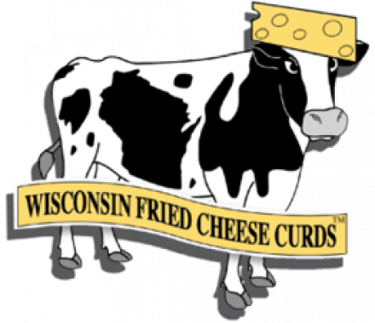What is a Cheese Curd?
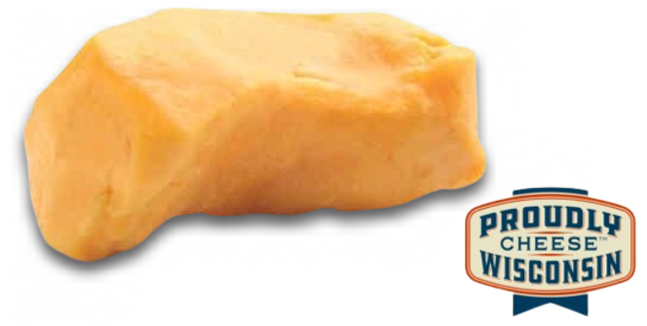

A Brief History
Long ago and far away, a nomad living in a vast Middle East desert decided to go on a far journey. So he saddled up his camel and poured a lot of milk in his saddlebag to drink along the way. It was a very hot day, even by Gobi standards, and the milk curdled after several hours of riding. When he opened up the bag, instead of milk, he found white curds with liquid! Yet another "Aha" moment in history.
But why did the milk curdle? His saddlebag had the enzyme called "rennin" in it because the bag was made from the stomach of a young cow. How this happened is a whole 'nother story, but the point is rennin causes coagulation or curdling. Hence the curds.
Another history spin speaks to vast geological change and mass migrations. Nature set the stage for America's Dairyland during the last Ice Age, when glaciers cut through what is now Wisconsin. As they receded, the massive mountains of ice left behind a countryside of rolling hills and lush pastureland. Millions of years later, when European immigrants migrated west, Wisconsin reminded many of their homelands, but without the royalty and oppression to deal with. Perfect!
Soon they were producing an abundance of top-quality milk and cheese. These men and women arrived with the tradition of making favorite cheeses from the old country. And so it was that the fame of their curds and other cheeses quickly spread throughout the land.
It's All About the Cheese...Curds
Before we go any further, let's take a moment to thank our wonderful Wisconsin cows and the farmers who raise those cows. "Thank you, wonderful Wisconsin cows and farmers." Okay, let's begin...
Simply put, Cheese Curds are squeaky fresh, delectable cheddar cheese in its natural, random shape and form before being processed into blocks of cheddar. Delectable cheddar cheese curds became popular when Wisconsin cheese makers would take handfuls of these delicious and nutritious cheese morsels home to their children.
Cheese curds are the freshest form of cheddar cheese. Cheese curds are regarded mainly as a regional delicacy, exclusive to Wisconsin and other areas of the Upper Midwest as well as Quebec, Canada, and Up-State New York. However, they are quickly growing in popularity and becoming more readily available to the entire country (or, at least, that is what one of our goals is).
Fresh cheese curds are a calcium-enriched, low-carb, protein snack. They are a healthy alternative to junk food, processed snacks and preservative-heavy snacks. Kids and adults alike love cheese curds. Fresh cheese curds are famous for their unique "fresh curd" characteristics, particularly the "squeak". A distinct squeaky noise and feeling can be experienced when eating fresh cheese curds. If a curd has lost its squeakiness, it can usually come back after a couple of seconds in a microwave.
A fresh curd is roughly the size and shape of a whole peanut. The natural flavor is a mild "fresh dairy" taste. The texture and feel are quite unique. They have about the same firmness as cheese but have a springy or rubbery quality, rather than the yielding, clay-like texture of cheese.
Cheese curds are known for being quite addictive. Make sure to have plenty of them on hand, especially when your friends ask to taste "just one".
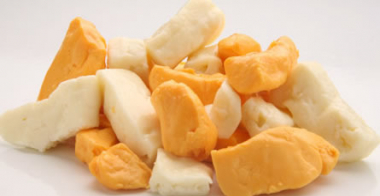

How Cheese Curds Are Made
Here is the process from milk to squeakalicious Cheese Curds:
Milk Intake: Quality milk is the starting point for quality cheese curds. It takes approximately 10 pounds of milk to make 1 pound of cheese.
Testing: All cheese plants constantly screen incoming milk samples for quality and purity.
Standardization: The milk is weighed, heat treated, or pasteurized, for product safety and uniformity.
Starter Culture: Starter culture is added to help determine the flavor and texture of the cheese.
Coagulant: A milk-clotting enzyme called rennet is added to coagulate the milk, forming a custard-like mass.
Cutting: Cutting begins the process of separating the liquid (whey) and the milk solids (curds).
Stirring & Heating: The curd and the whey are cooked and stirred until the curd reaches the desired temperature and firmness.
Whey Draining: The whey is drained, leaving the tightly formed curd.
Curd Transformation: The Curd Is Born!
Eat and Enjoy!
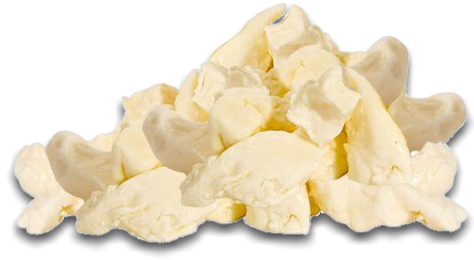

Fried Cheese Curds
What is a Wisconsin Fried Cheese Curd?
Basically, a fried cheese curd is the same as a fresh cheese curd, but it is dipped in a batter and then deep fried. Our deep-fried cheese curds are dipped in a beer batter for a distinctive taste. One bite and you'll know that you've found something good.
How to Make Your Own Wisconsin Fried Cheese Curds™ at Home
Making your own Wisconsin Fried Cheese Curds™ at home is relatively easy. You just need a few ingredients, some patience, and an empty stomach!
What you will need:
Personal Deep Fryer (or a skillet pan)
Tongs
2 bowls
1 serving container
Napkins
Vegetable or fry oil
Half a can of your favorite beer (preferably a Wisconsin brand!)
Cheese Curd Batter Mix (sold on our Food Menu page)
1 egg
1 bag of cheese curds (sold on our Food Menu page)
Directions:
Preheat oil to 350F – 375F degrees.
In one bowl, slightly beat the egg.
In the other bowl, mix together the Cheese Curd Batter Mix and beer.
Dip the cheese curds in the egg (frozen cheese curds work the best).
Roll the egg-covered cheese curds in the batter mix.
Carefully place the covered cheese curds into the heated oil.
Fry 1-2 minutes or until golden brown. (Over frying will cause the cheese to ooze out from the batter casing).
Strain, eat, enjoy, wipe excess oil from lips with napkin.
Repeat!


What Makes Wisconsin Fried Cheese Curds™ Different from Mozzarella Sticks or Cheese Balls?
First of all, mozzarella sticks are made from mozzarella cheese and is aged cheese. Secondly, cheese curds, as described above, are made from unaged baby cheese. Lastly, mozzarella sticks are formed or shaped to the stick formation; cheese curds are random-shaped.
Similarly, cheese balls are usually aged or regular cheese cut, sliced or broken into chunks. Again, cheese curds are random-shaped naturally and unaged.
If you are eating something that looks HUGE--larger than the size of a whole peanut--you are either eating a cheese ball or a cheese curd with too much batter.
What is the difference between white and yellow (or orange) cheese curds?
There really is no difference between white and yellow cheese curds other than color. The color is actually a plant extract, annatto. This color does not change the taste, but a lot of people prefer white. (Just for the record, we use only white cheddar.)
